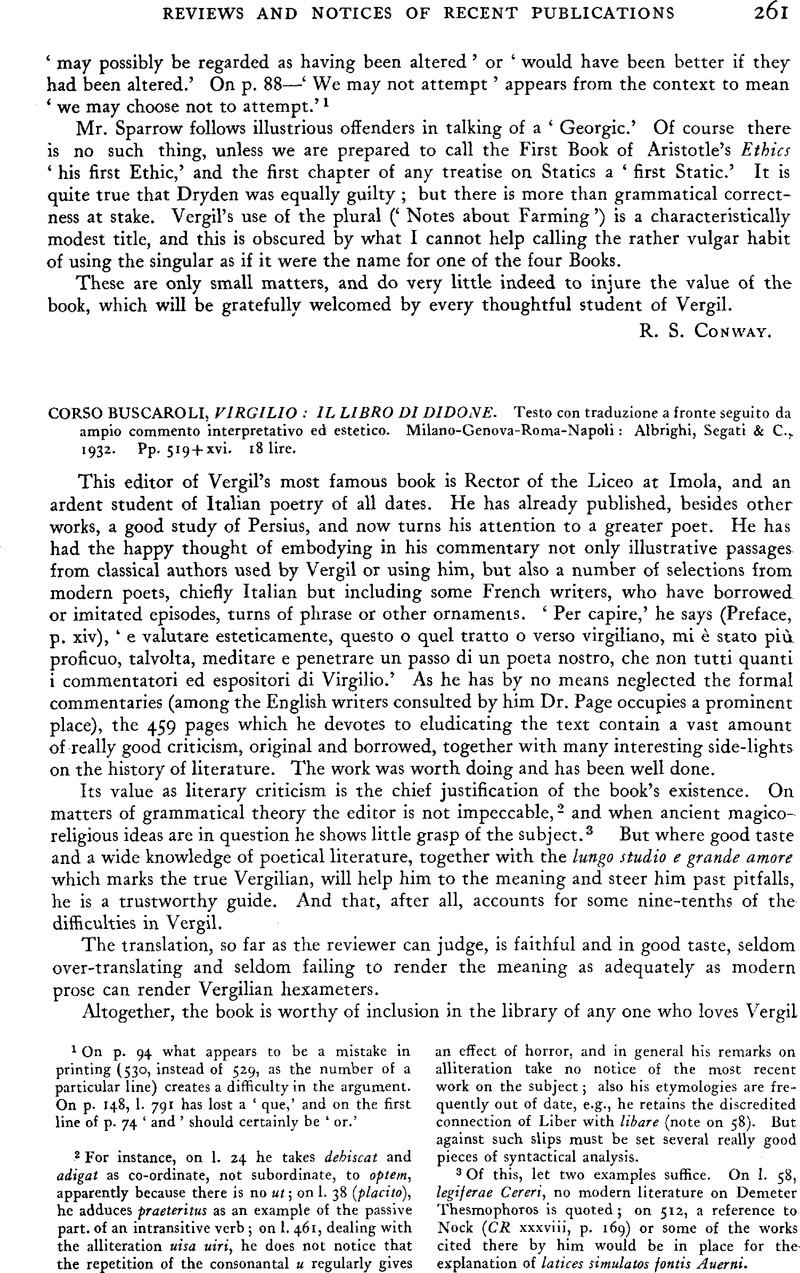No CrossRef data available.
Published online by Cambridge University Press: 24 September 2012

1 On p. 94 what appears to be a mistake in printing (530, instead of 529, as the number of a particular line) creates a difficulty in the argument. On p. 148, 1. 791 has lost a ‘que,’ and on the first line of p. 74 ‘and’ should certainly be ‘or.’
2 For instance, on 1. 24 he takes dehiscat and adigat as co-ordinate, not subordinate, to optem, apparently because there is no ut; on 1. 38 (placito), he adduces praeteritus as an example of the passive part, of an intransitive verb; on 1. 461, dealing with the alliteration uisa uiri, he does not notice that the repetition of the consonantal u regularly gives an effect of horror, and in general his remarks on alliteration take no notice of the most recent work on the subject; also his etymologies are frequently out of date, e.g., he retains the discredited connection of Liber with libare (note on 58). But against such slips must be set several really good pieces of syntactical analysis.
3 Of this, let two examples suffice. On 1. 58, legiferae Cereri, no modern literature on Demeter Thesmophoros is quoted; on 512, a reference to Thesmophoros is quoted; on 512, a reference to Nock (CR xxxviii, p. 169) or some of the works cited there by him would be in place for the explanation of latices simulatos fontis Auerni.